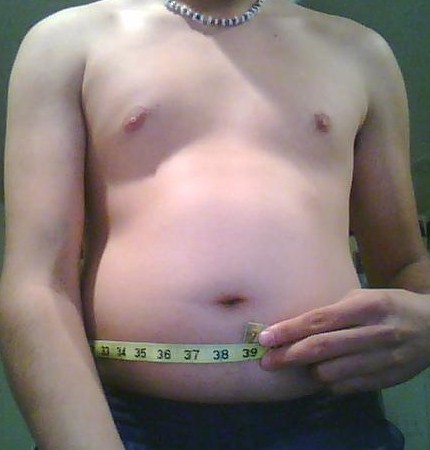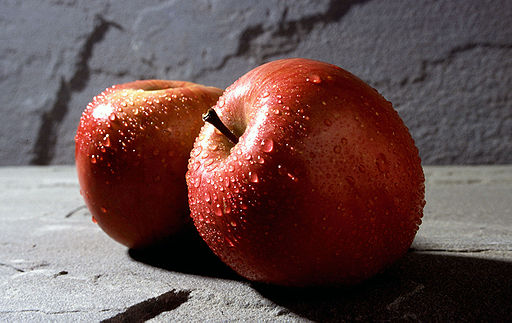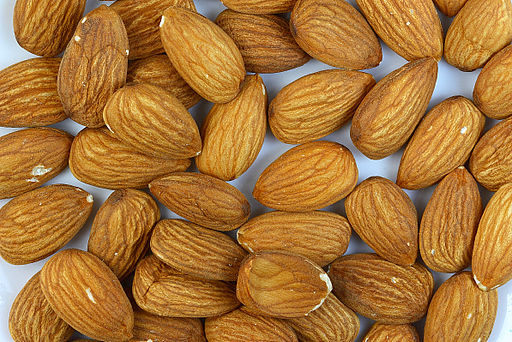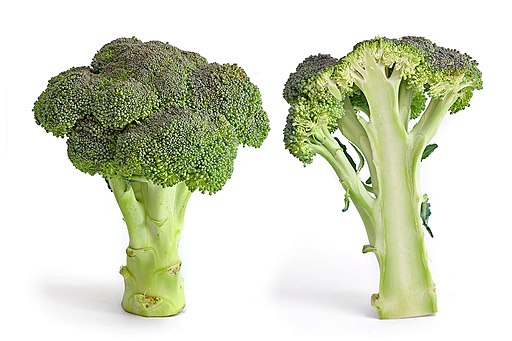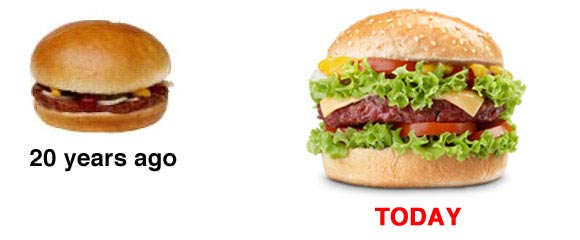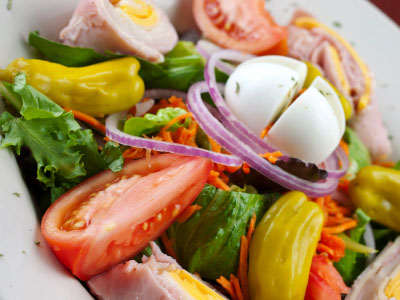The number of calories people should eat each day depends on several factors, including their age, size, height, sex, lifestyle, and overall general health. A physically active 6ft 2in male, aged 22 years, requires considerably more calories than a 5ft 2ins sedentary woman in her 70s.
Recommended daily calorie intakes also vary across the world. According to the National Health Service (NHS), UK, the average male adult needs approximately 2,500 calories per day to keep his weight constant, while the average adult female needs 2,000. US authorities recommend 2,700 calories per day for men and 2,200 for women. It is interesting that in the UK, where people on average are taller than Americans, the recommended daily intake of calories is lower. Rates of overweight and obesity among both adults and children in the USA are considerably higher than in the United Kingdom.
The NHS stresses that rather than precisely counting numbers (calories), people should focus more on eating a healthy and well balanced diet, being physically active, and roughly balancing how many calories are consumed with the numbers burnt off each day.
According to the United Nation's Food and Agriculture Organization (FAO), the average person's minimum calorie requirement per day globally is approximately 1,800 kilocalories.
Daily calorie consumption varies considerably around the world (countries in gray indicates "no data available")
What is the difference between calories and kilocalories?Scientifically speaking, one kilocalorie is 1,000 calories. However, the term calorie in lay English has become so loosely used with the same meaning as kilocalorie, that the two terms have virtually merged. In other words, in most cases, a calorie and kilocalorie have the same meaning.
A kilocalorie is the amount of energy required to raise the temperature of 1 kilogram of water from 15° to 16° Celsius (centigrade) at one atmosphere.
A "small calorie" refers to the traditional scientific term of calorie, meaning one-thousandth of a kilocalorie.
Internationally, most nations talk about food energy in kJ (kilojoules). 1 kcal (kilocalorie) = 4.184 kJ.
In this article, the term "calorie" means the same as "kilocalorie" or "kcal".
Portion sizesIn industrialized nations and a growing number of emerging economies, people are consuming many more calories than they used to. Portion sizes in restaurants, both fast food ones as well as elegant places, are far greater today.
The average cheeseburger in the USA 20 years ago had 333 calories, compared to the ones today with over 600 calories
The human body and energy usageFor the human body to remain alive, it requires energy. Approximately 20% of the energy we use is for brain metabolism. The majority of the rest of the body's energy requirements are taken up for the basal metabolic requirements - the energy we need when in a resting state, for functions such as the circulation of the blood and breathing.
If our environment is cold, our metabolism increases to produce more heat to maintain a constant body temperature. When we are in a warm environment, we require less energy.
We also require mechanical energy for our skeletal muscles for posture and moving around.
Respiration, or specifically cellular respiration refers to the metabolic process by which an organism gets energy by reacting oxygen with glucose to produce carbon dioxide, water and ATP energy. How efficiently energy from respiration converts into physical (mechanical) power depends on the type of food eaten, as well as what type of physical energy is used - whether muscles are used aerobically or anaerobically.
Put simply - we need calories to stay alive, even if we are not moving, and need calories to keep our posture and to move about.
How many calories do I need per day?The Harris-Benedict equation, also known as the Harris-Benedict principle, is used to estimate what a person's BMR (basal metabolic rate) and daily requirements are. The person's BMR total is multiplied by another number which represents their level of physical activity. The resulting number is that person's recommended daily calorie intake in order to keep their body weight where it is.
This equation has limitations. It does not take into account varying levels of muscle mass to fat mass ratios - a very muscular person needs more calories, even when resting.
How to calculate your BMR
Male adults
66.5 + (13.75 x kg body weight) + (5.003 x height in cm) - (6.755 x age) = BMR
66 + ( 6.23 x pounds body weight) + ( 12.7 x height in inches ) - ( 6.76 x age) = BMR
Female adults
55.1 + (9.563 x kg body weight) + (1.850 x height in cm) - (4.676 x age) = BMR
655 + (4.35 x kg body weight) + (4.7 x height in inches) - (4.7 x age) = BMR
Applying levels of physical activity to the equation
Sedentary lifestyle - if you do very little or no exercise at all
Your daily calorie requirements are BMR x 1.2
Slightly active lifestyle - light exercise between once and three times per week
Your daily calorie requirements are BMR x 1.375
Moderately active lifestyle - if you do moderate exercise three to five days per week
Your daily calorie requirements are BMR x 1.55
Active lifestyle - if you do intensive/heavy exercise six to seven times per week
Your daily calorie requirements are BMR x 1.725
Very active lifestyle - if you do very heavy/intensive exercise twice a day (extra heavy workouts)
Your daily calorie requirements are BMR x 1.9
How much should I weigh?As with how many calories you should consume each day, your ideal body weight depends on several factors, including your age, sex, bone density, muscle-fat ratio, and height.
BMI (Body Mass Index) - some say BMI is a good way of working out what you should weigh. However, BMI does not take into account muscle mass. A 100-metre Olympic champion weighing 200 pounds (about 91 kilograms), who is 6 feet (about 1mt 83cm) tall, who has the same BMI as a couch potato of the same height, is not overweight, while the couch potato is overweight.
Waist-hip ratio - this measurement is said to be more accurate at determining what your ideal weight should be, compared to BMI. However, waist-hip ratio does not properly measure an individual's total body fat percentage (muscle-to-fat ratio), and is also limited.
Waist-to-height ratio - this new way of determining ideal body weight is probably the most accurate one available today. It was presented by Dr. Margaret Ashwell, ex-science director of the British Nutrition Foundation, and team at the 19th Congress on Obesity in Lyon, France, on 12th May, 2012. It is also a very simple calculation; easy for lay people to work out.Dr. Ashwell's team found that:
"Keeping your waist circumference to less than half your height can help increase life expectancy for every person in the world."
Put simply, to achieve and/or maintain your ideal body weight:"Keep your waist circumference to less than half your height."If you are a 6ft (183cm) tall adult male, your waist should not exceed 36 inches (91 cm).
If you are a 5ft 4 inches (163 cm) tall adult female, your waist should not exceed 32 inches (81 cm)
How do I measure my waist? - according to the World Health Organization (WHO), you should place the tape-measure half-way between the lower rib and the iliac crest (the the pelvic bone at the hip).
Not all calories are the same, not all diets are the sameSimply counting calories, and ignoring what you put in your mouth might not lead to good health. Insulin levels will rise significantly more after consuming carbohydrates than after eating fats (no rise at all) or protein. Some carbohydrates, also known as carbs, get into the bloodstream in the form of sugar (glucose) much faster than others. Refined flour is a fast carb, while coarse oatmeal is slow. Slow-release carbs are better for body weight control and overall health than fast carbs.
A 500-calorie meal of fish/meat, salad, and some olive oil, followed by fruit, is much better for your health and will keep you from being hungry for longer than a 500-calorie snack of popcorn with butter or toffee.
Taking 500 calories from this dish is much better for the health, preventing hunger, and maintaining a healthy body weight than the equivalent calories in popcorn with butter or toffee
There are several diets today which claim to help people lose or maintain their body weight. Some of them have been extremely successful and good for participants, but are notoriously difficult to adhere to long-term.
The "Eight Most Popular Diets", according to how many articles mentioned them favorably, how popular they were generally, and which ones we received the most positive feedbacks on, include:
The Atkins Diet
The Zone Diet
Vegetarianism
Veganism
Weight Watchers
The South Beach Diet
The Raw Food Diet
The Mediterranean Diet
Written by Christian Nordqvist

